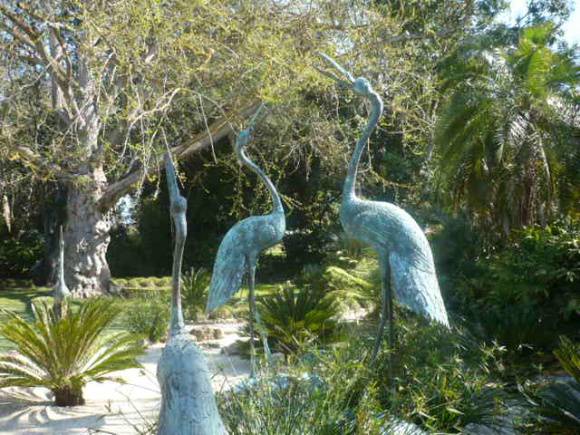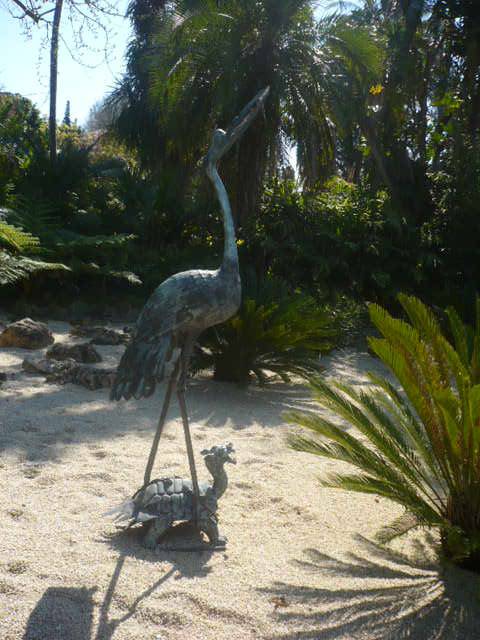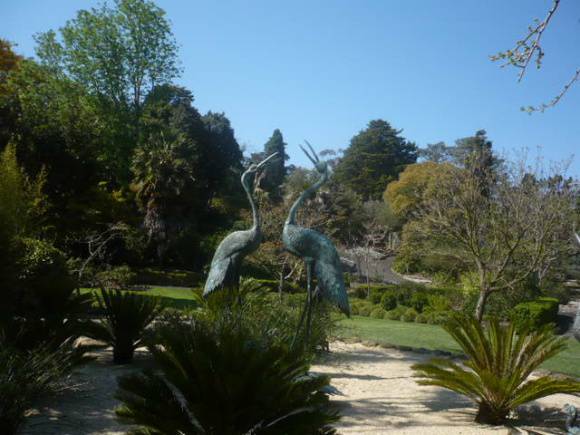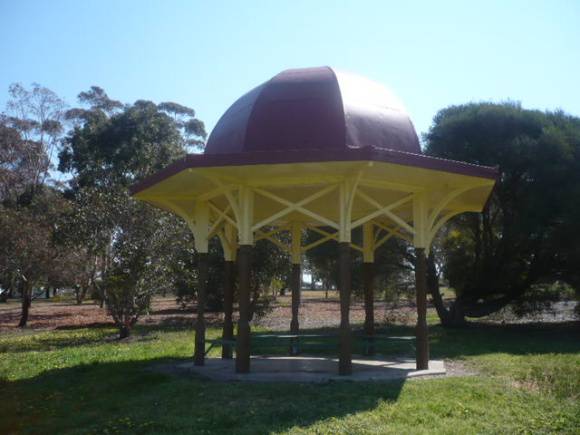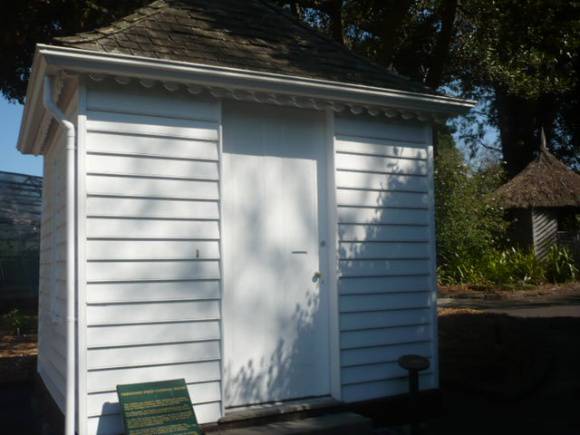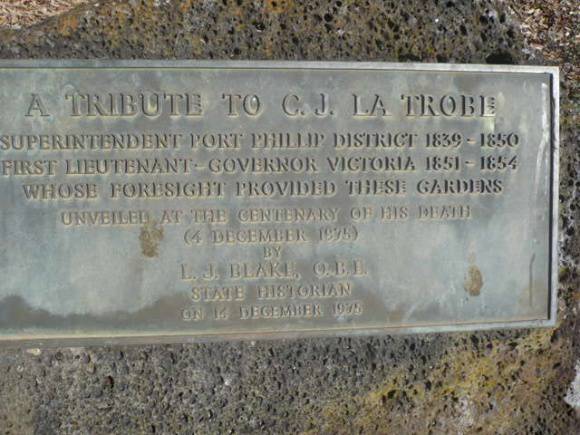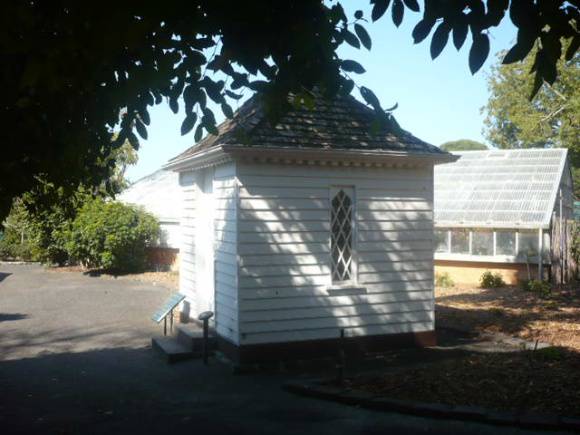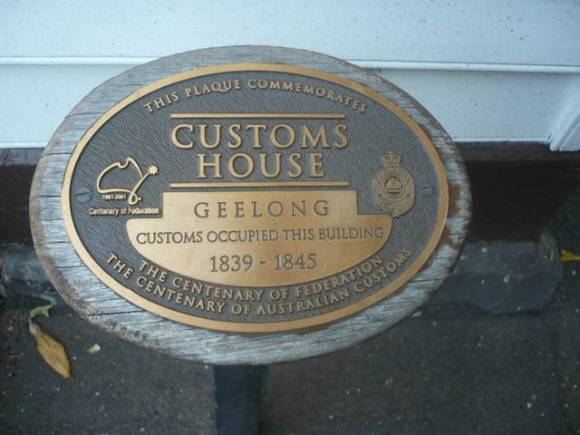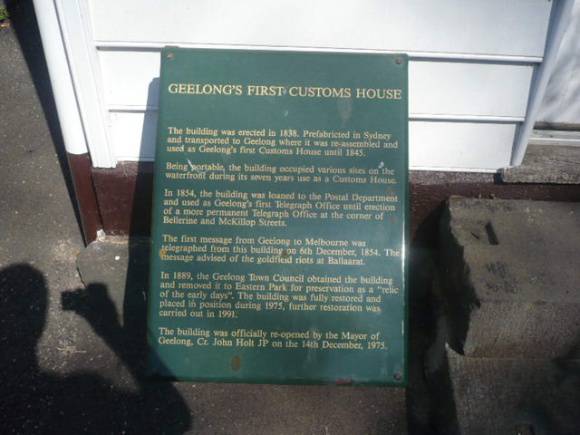| Back to search results » | Back to search page » |
|
Buildings & Objects. LaTrobe Plaque. Metal Storks. Queen Victoria Statue. Rotunda Eastern Botanic Gardens
LocationEastern Botanic Gardens, GEELONG VIC 3220 - Property No 241992 LevelIncluded in Heritage Overlay |
|
Statement of Significance
B Listed - Regional Significance STATEMENT OF SIGNIFICANCE - GRC - HISTORIC PLACES DOCUMENTATION SHEET NO. 233 METAL STORKS The bronze storks now located in the Geelong Botanical Gardens were originally situated in the gardens of St Albans Homestead in Whittington, the stud property erected for James Wilson in 1873. The storks are exquisite examples of the foundry man's craft and a great historical and aesthetic interest. The realistic storks RECOMMENDATIONS: PROTECTIVE MEASURES Geelong Regional Commission Register. REFERENCES The inscription reads "A Tribute to CJ LaTrobe Superintended Port Phillip District 1839-1854 Whose foresight provided these gardens Unveiled at the Centenary of his Death (4 December 1875) by L.J. Blake, O.B.E. State Historian On 14 December, 1975 For a detailed account of LaTrobe and the establishment of the Botanical Gardens see: George Jones - Growing Together: A gardening History of Geelong Extending to Colac and Campedown, Belmont, 1984, pp 21-25. Geelong Advertiser - 25 January 1848, 4th February, 1848, for details on the foundation of the 'Ornamental and Public Garden Grounds' at Geelong. STATEMENT OF SIGNIFICANCE - GRC - HISTORIC PLACES DOCUMENTATION SHEET NO. 232 LATROBE PLAQUE The Latrobe plaque commemorates the establishment of the Geelong Botanic Gardens in 1848 following the direction of the Superintendent of the Port Phillip District, Charles Joseph LaTrobe. The ornamental gardens were developed by noted botanist and horticulturalist, Daniel Bunce, and are of great heritage value in the Geelong region and the history of horticultural pursuits in Victoria. RECOMMENDATIONS: PROTECTIVE MEASURES Geelong Regional Commission Register. REFERENCES Brownhill, W. R. - A History of Geelong and Corio Bay, Wilke & Co., Melbourne, 1955, pp. 523 for illustrations. The Australian - 6 April 1895 for description of St Albans Stud and photographs. See the documentation Sheet 'St Albans' homestead (Shire of Bellarine Sheet no 106) for general details. The origin of the design of the bronze storks has not been researched in detail and the sculptor and foundry have not bee identified. STATEMENT OF SIGNIFICANCE - GRC - HISTORIC PLACES DOCUMENTATION SHEET NO. 173 THE FIRST CUTOMS HOUSE The First Customs House, a square plain timber structure built of timber studs with quirk bead, weatherboards and a thatch roof, was reputedly prefabricated in Sydney c1838 and shipped to Geelong. The first Customs House now located in the Botanic Garden in East Geelong, is claimed to be the oldest authenticated building still extant in Victoria. This picturesque gothic pavilion dates from the first four years of settlement at Port Phillip and is of paramount importance to the history of the foundations of the Port Phillip settlement and the development of customs and tariff protection in the infant colony. When the first permanent stone customs house was built in 1845, the timber pavilion was used for a short time as the telegraph Office RECOMMENDATIONS: PROTECTIVE MEASURES Geelong Regional Commission Register. Historic Buildings Council register Australian Heritage Commission Register of the National Estate REFERENCES National Trust of Australia (Victoria), File No 2538, 'Research into Customs House (First), Nursery Section, Botanic Gardens, Geelong' August 1977. Sub Collector of Customs Records and Other Colonial Administration Documents: Public Records Office, Laverton, Victoria. STATEMENT OF SIGNIFICANCE - GRC - HISTORIC PLACES DOCUMENTATION SHEET NO. 235 ROTUNDA EASTERN PARK The somewhat emasculated and dilapidated rotunda in Eastern Park was originally sited in the Market Square, Geelong and functioned as a shelter pavilion. Designed by Percy Everett, the structure has a spherical roof in profile and octagonal plan platform. Mush of the original ornamental detail has apparently been removed, possibly when the rotunda was relocated in Eastern Park in c1912. Everett designed a number of more notable pavilions in Geelong, the most important of which is the Hitchcock Bandstand in Johnston Park. RECOMMENDATIONS: PROTECTIVE MEASURES Geelong Regional Commission Register. REFERENCES Brownhill, W. R. - A History of Geelong and Corio Bay, Wilke & Co., Melbourne, 1955, pp. 253-254 for details of information of architectural practice of Seely, King and Everett. Aitken, Richard - "Edwardian Geelong: An Architectural Introduction", unpublished thesis, 1979, Deakin University. Pp 20-22. Aitken, Richard - Ibid., p. 61 - Description of Rotunda. Aitken, Richard - Ibid., p. 21, information cited from Mrs Shirley Ivy (Everett's sister) from scrapbook, for development of P E Everett. Tall Stories from Geelong Advertiser, 1960-61, a series of remiscences as cited in R Aitken, IBID, Aitken, Richard - "Leisure and Pleasure Buildings of Geelong, thesis, Deaking Universit, Geelong 1979. STATEMENT OF SIGNIFICANCE - GRC - HISTORIC PLACES DOCUMENTATION SHEET NO. 234 QUEEN VICTORIA STATUE - EASTERN GARDENS The Statue of Queen Victoria, one of a large number which burgeoned throught the Colony after her death in 1901 is a fine example of figurative sculpture on a classical stone base. The casting in London of the sculpted effigy by J. Davie a Melbourne Sculptor reflects the nature of the foundry man's craft. The stature is historical significance as Geelong's mark of affection to their long serving Queen and a piece of fine statuary in the Eastern Gardens. RECOMMENDATIONS: PROTECTIVE MEASURES Geelong Regional Commission Register. REFERENCES Inscription Reads: "Victoria Queen and Empress 1837-1901 An Empire on which the sun never sets: Lang, Dr W.R. - "Geelong's Monuments and Plaques No 31. G.H.R.C. Geelong Advertiser - 25th May, 1904 Brownhill, W. R. - A History of Geelong and Corio Bay, Wilke & Co., Melbourne, 1955, pp. 139-140. Geelong Historical Records Centre photographic collection No's 272 & 2052. The stone base was fashioned by Clement Nash, monumental mason of Geelong.
Group
Parks, Gardens and Trees
Category
Garden Botanic


